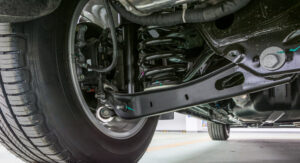MuscleCar Builds
Want more content like this?
Join the PowerNation Email NewsletterParts Used In This Episode
Afco Performance
12" 125# coil over spring,double adjustable with bearing ends.
Auto Body Color & Supply Co.
Custom colors,santiago gold and buttrey black,mixed for lemans project.
Auto Weld Chassis and Components
Custom formed frame rails.
Global West Suspension
Adjustable rear control arm.
Machine Tech Racing Engines
LS blower engine.
Master Power Brakes
9 inch housing with a detroit locker,also supplied truck arm control arms.
Moser Engineering
Axle housing, 40 splined gun drilled axles, star flanges, nodular case 3.250, full spool, 35 spline pimion yoke, 3.89 ring lightened.

























